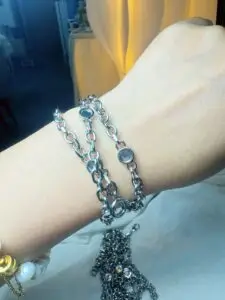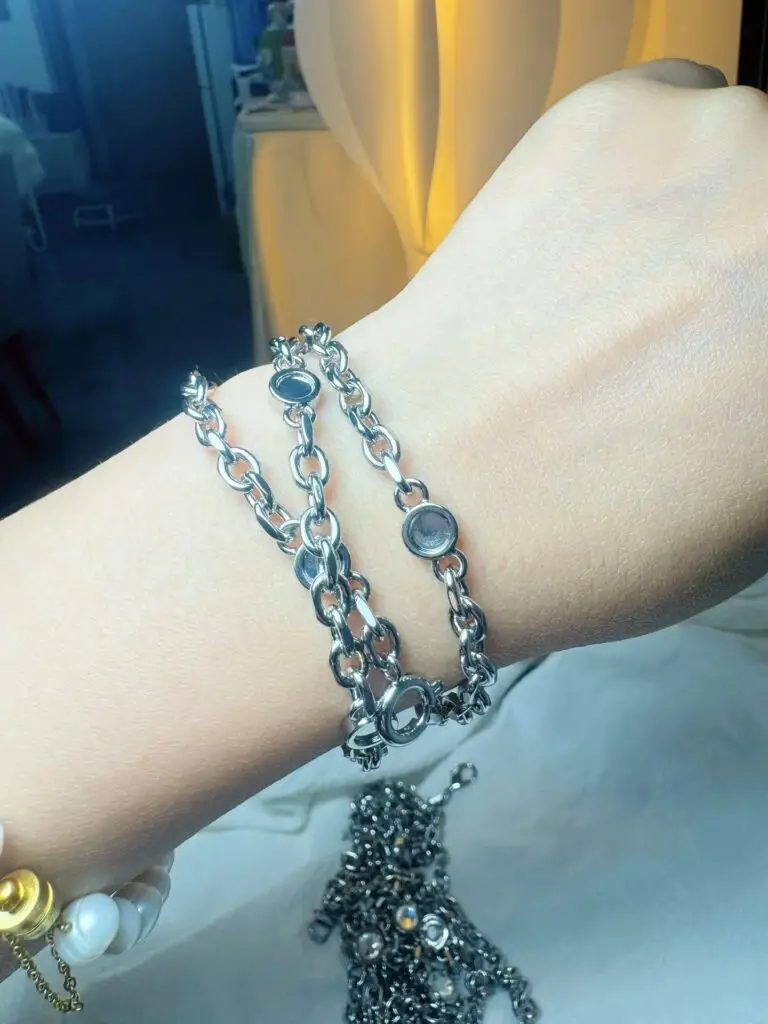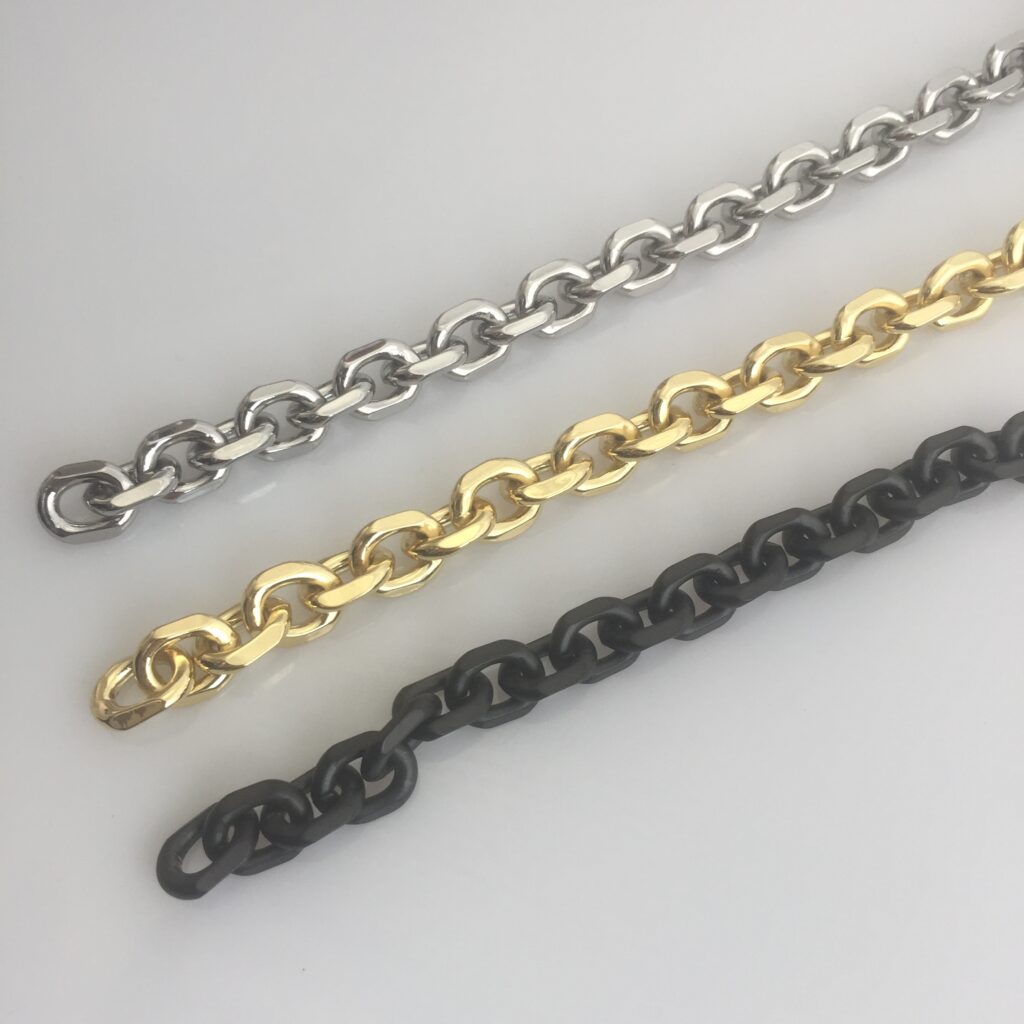
“how-to-choose-the-right-hardware-for-your-handbag-XHbWGrMHKB”>How To Choose The Right Hardware For Your Handbag
When selecting hardware for a handbag, particularly chain straps, it is essential to consider both aesthetic appeal and functional practicality. Hardware plays a pivotal role in enhancing the overall design and usability of a handbag, making it more than just an accessory but a statement piece. This article will guide you through the key factors to consider when choosing the right hardware for your handbag, focusing on chain straps.
First and foremost, the material of the chain strap is a critical consideration. Common materials include metal, such as brass, zinc, or stainless steel, each offering varying degrees of durability and cost. Brass is renowned for its durability and versatility, often plated with gold or silver for a luxurious finish. Zinc, while more affordable, may lack the same level of durability. Stainless steel, on the other hand, is rust-resistant and ideal for a modern look. Additionally, some chains may feature coatings like PVC or fabric for a unique appearance, though these may require more meticulous care.
Size and proportion are equally important to ensure the chain strap complements the handbag’s design. A chain that is too large may overwhelm a small bag, while a delicate chain on a large bag may appear out of place. Consider the thickness and length of the chain, ensuring it is proportional to the bag’s dimensions. The chain’s weight should also be appropriate, providing a balanced feel without being cumbersome.

The finish and color of the chain strap significantly impact the handbag’s aesthetic. Popular finishes include gold, silver, rose gold, and gunmetal, each suited to different styles. For a modern look, silver or gunmetal is ideal, while gold or rose gold evokes a more classic or vintage vibe. It is crucial to ensure the chain’s finish aligns with the bag’s overall style, whether it be modern, vintage, or bohemian. While trends may influence your choice, opting for a timeless finish ensures longevity.
Functionality is another key aspect to consider. Adjustable chains offer versatility, allowing the wearer to customize the strap length to their preference. Some chains feature decorative elements like charms or tassels, enhancing both functionality and visual appeal. These elements can add a personal touch, making the handbag more distinctive.
Quality and durability are paramount to ensure the hardware withstands daily use. High-quality materials and craftsmanship are essential to prevent breakage and wear. Look for smooth, even finishes and secure attachments to ensure longevity.
Lastly, consider the brand and cost. While designer brands often offer superior quality, there are affordable alternatives that provide excellent value. It is important to balance the budget with quality expectations, ensuring the hardware meets both aesthetic and functional needs.
In conclusion, selecting the right hardware for your handbag involves a thoughtful consideration of material, size, finish, functionality, quality, and brand. By carefully evaluating these factors, you can choose a chain strap that enhances both the functionality and style of your handbag, making it a cherished possession.
Current Trends In Handbag Chain Accessories
In the realm of fashion, handbag chain accessories have emerged as a pivotal element, reflecting both aesthetic and functional evolution. These components, known as 五金手提包链条配件, are integral to the design and utility of handbags, offering a blend of style and practicality. Current trends in this domain highlight a dynamic interplay between material innovation, design diversity, and sustainability, catering to the discerning tastes of contemporary consumers.

The choice of materials in handbag hardware has seen a significant shift, with luxury finishes such as gold and silver tones remaining perennial favorites. However, there is a noticeable inclination towards sustainable materials, aligning with the global push for eco-conscious practices. Designers are increasingly experimenting with mixed metal combinations, creating unique visual contrasts that appeal to a broad audience. This trend not only enhances the aesthetic appeal but also underscores the industry’s commitment to environmental responsibility.
Design trends in handbag chains are equally noteworthy, oscillating between minimalist elegance and bold, oversized statements. While minimalist designs continue to attract those who prefer understated sophistication, bold and chunky chains have carved out their niche, offering a striking contrast. Customization has also become a key driver, with brands offering bespoke hardware options that allow consumers to personalize their accessories, reflecting individual style and preferences.
Functionality remains a cornerstone in the evolution of handbag chain accessories. Beyond mere aesthetics, these components are engineered for durability and practicality. Features such as adjustable chains and detachable parts have gained popularity, catering to the modern consumer’s need for versatility. The integration of technology, such as GPS tracking devices, further enhances functionality, addressing security concerns and adding value to these accessories.
Sustainability is another critical trend influencing the production of handbag hardware. The shift towards eco-friendly materials and ethical manufacturing processes is not just a fad but a necessary response to environmental challenges. Brands are increasingly adopting recycled metals and sustainable practices, resonating with consumers who prioritize ethical consumption.
Cultural influences also play a significant role in shaping the design of handbag chains. Inspired by diverse cultural heritages and historical periods, these accessories often feature intricate patterns and motifs, adding a layer of uniqueness. This cultural infusion not only enriches the design palette but also appeals to a global clientele seeking distinctive and meaningful accessories.
In conclusion, the trends in handbag chain accessories reflect a harmonious blend of innovation, sustainability, and cultural diversity. As consumer preferences continue to evolve, the industry’s focus on quality, eco-consciousness, and personalization will likely steer future trends. This dynamic landscape underscores the enduring relevance of handbag hardware in the world of fashion, where form and function coalesce to create timeless appeal.
DIY Guide To Adding Hardware To Your Handbag
五金手提包链条配件
Personalizing your handbag with metal hardware can elevate both its functionality and aesthetic appeal. Whether you’re looking to add a touch of elegance or enhance durability, incorporating metal chain straps, rings, or other hardware elements can transform an ordinary bag into a bespoke accessory. This guide will walk you through the process of adding hardware to your handbag, ensuring a seamless and professional finish.
First and foremost, it is essential to gather the necessary tools and materials. A pair of pliers, screwdrivers, and a measuring tape are indispensable for this project. Depending on the type of hardware you wish to install, you may also need rivets, screws, or clasps. Select high-quality metal components, such as stainless steel or brass, to ensure longevity. These items are widely available at craft stores or online retailers specializing in bag-making supplies.

Once you have your tools ready, the next step is to determine where to place the hardware on your handbag. Measure the dimensions of your bag to decide the optimal position for the chain straps, rings, or other decorative elements. Mark the areas where you plan to install the hardware using a pencil or chalk, ensuring symmetry for a polished look.
With your measurements in place, you can begin the installation process. Start by cutting the chain to the desired length using pliers or a chain cutter. Attach the ends of the chain to metal rings or clips, which can be secured to the bag using screws or rivets. For a more durable finish, consider reinforcing the attachment points with sturdy fabric or leather reinforcements.
When working with metal hardware, it is crucial to handle the tools carefully to avoid damaging the bag or injuring yourself. Wear protective gloves to prevent cuts from sharp edges, and work on a stable surface to maintain control. If you are new to DIY projects, practice the technique on scrap fabric before applying it to your actual handbag.
After securing the hardware, inspect the bag to ensure all components are evenly spaced and firmly attached. Test the durability of the attachments by gently tugging on the chain or straps. If necessary, tighten any loose screws or rivets for added stability.
Beyond functionality, metal hardware can also serve as a stylish accent. Experiment with different chain textures, finishes, and lengths to match your style or complement the bag’s design. For instance, a sleek silver chain bölüm can add a modern touch, while a gold-finished clasp can lend a vintage feel.
In conclusion, adding hardware to your handbag is a rewarding DIY project that combines creativity with practicality. By following these steps and using high-quality materials, you can enhance your bag’s functionality and make a fashion statement. Whether you’re a seasoned crafter or a beginner, this project offers an opportunity to personalize your accessory and showcase your craftsmanship. So why not give it a try? With patience and attention to detail, you can create a handbag that reflects your unique taste and meets your everyday needs.


